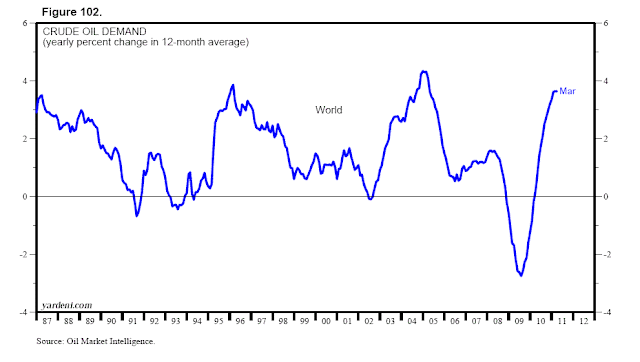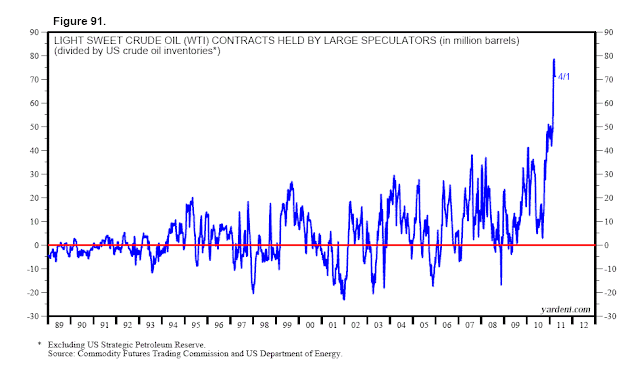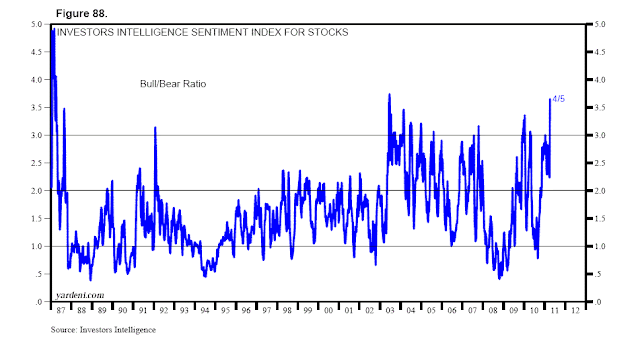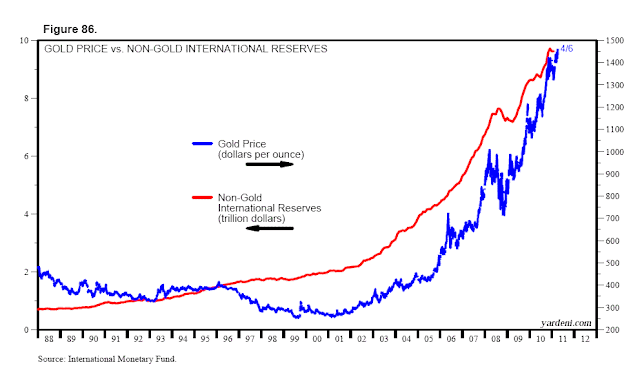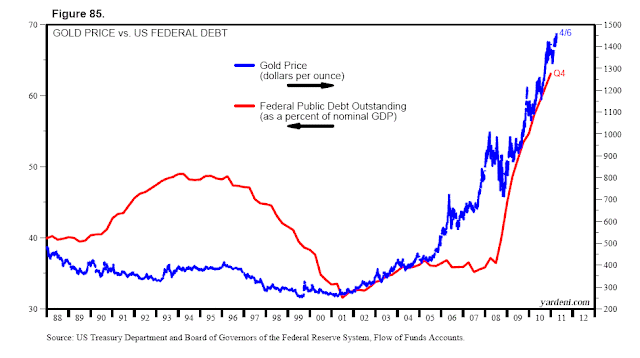Thursday, April 28, 2011
Wednesday, April 27, 2011
Consumer Confidence
Monday, April 25, 2011
US Earnings, Global Exports, & US Manufacturing
Wednesday, April 20, 2011
Global Oil Demand Growth
 |
Interestingly, the growth rate in crude oil demand among the 30 OECD economies rose to a new cyclical high of 2.2% in March, while it dropped to 5.2% for non-OECD countries from the most recent cyclical peak of 5.7% during August 2010. This may be an early warning that slower growth may be ahead as high oil prices are pushing up inflation rates in emerging economies, forcing their central bankers to tighten and to slow economic growth. (We update these charts for subscribers to our service in our Global Oil Demand & Supply.) |
Equity Holdings
Tuesday, April 19, 2011
CPI Inflation in the US
Sunday, April 17, 2011
China's M2 & Bank Loans
Friday, April 15, 2011
Wednesday, April 13, 2011
US Federal Budget Deficit
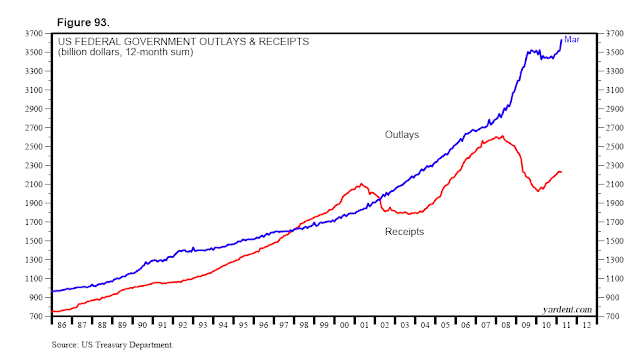 |
In the past, political gridlock was bullish because warring factions and special interest groups checked and balanced one another’s fiscal ambitions and excessive demands. In recent years, they’ve learned that they can all get what they want by issuing more and more government debt. Today’s gridlock is all about nobody being willing to compromise by giving up any of the deficit-financed perks they managed to get from the government. But wait a minute: Won’t the need to raise the debt limit before the end of May force the Democrats and the Republicans to agree on a deficit reduction plan? They will. They’ll agree that the deficit needs to be cut by $4 trillion over the next 10-12 years. That may be as much progress as they are likely to make for a long time. (We update these charts regularly for subscribers in our Government Finance briefing book.) |
Tuesday, April 12, 2011
Crude Oil
Monday, April 11, 2011
German Production, Orders & Stock Market
 |
Germany’s stock market is up 96.5% since it bottomed during March 2009. A few days ago, it successfully retested its 200-day moving average. It now seems set to rise to a new cyclical high. |
Bull/Bear Ratio
Thursday, April 7, 2011
Gold
Tuesday, April 5, 2011
Earnings & Valuation
Monday, April 4, 2011
S&P 500 Earnings Squiggles
Sunday, April 3, 2011
The Profit & Employment Cycles
Subscribe to:
Comments (Atom)







